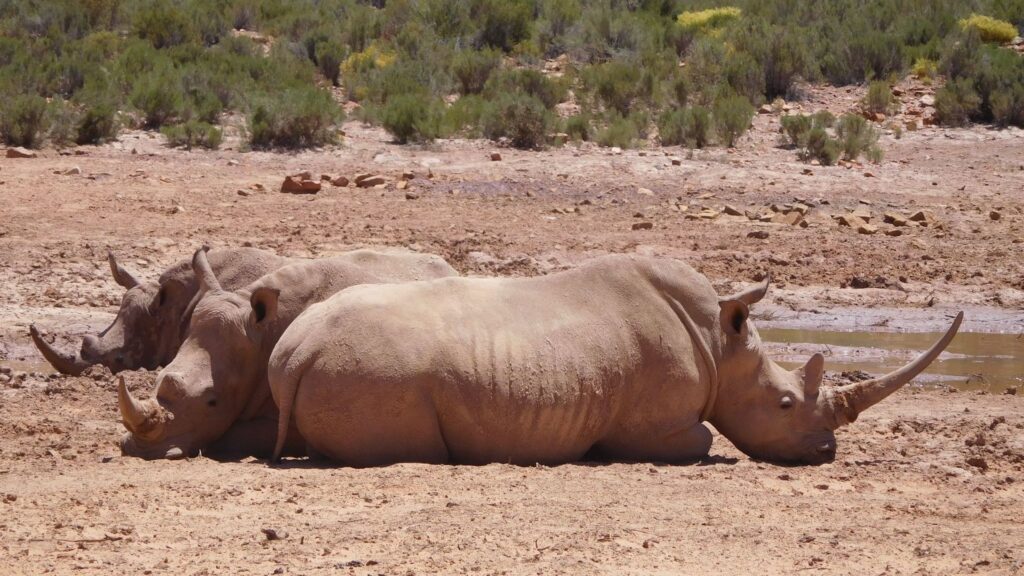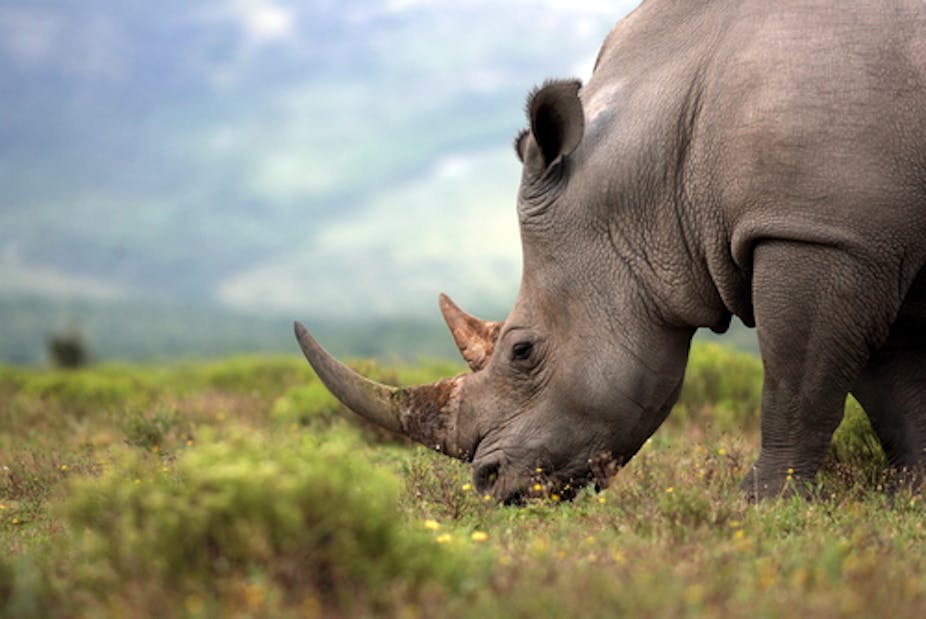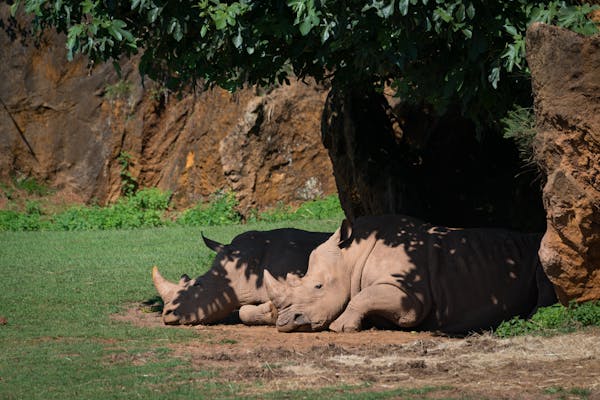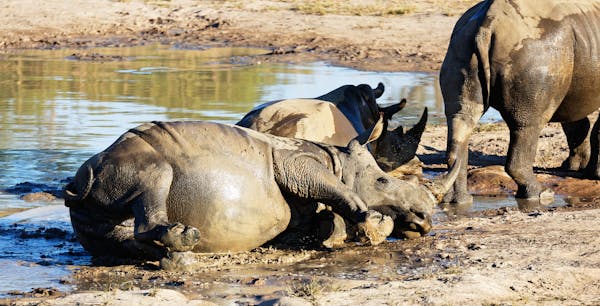WORLD RHINO DAY
‘Good news’ for rhinos as Africa defies poaching crisis to boost populations
 Rhinos in the Eastern Cape. (Photo: David Silverman / Getty Images)
By Tiara Walters | 21 Sep 2023
Rhinos in the Eastern Cape. (Photo: David Silverman / Getty Images)
By Tiara Walters | 21 Sep 2023
‘We can take a sigh of relief for the first time in a decade,’ declares leading conservation group on World Rhino Day, but urges caution.
__________________________________________________________________________________________________________________
Reversing a decade of decline, Africa’s rhino population has risen amid the poaching crisis, according to an announcement by the IUCN African Rhino Specialist Group (AfRSG), which has combined rhino data from range states to produce a continent-wide tally.
Marking World Rhino Day on Friday 22 September, the group said that Africa’s rhino population had grown by 5.2% by the end of 2022, reaching 23,290 animals.
White rhinos, the larger and more docile of the two African species, had achieved something of a milestone, attaining their first increase in the decade since 2012.
Now at more than 16,800, the continent’s white rhino population had increased by 5.6%.
A boost in critically endangered black rhinos had taken their numbers to nearly 6,500, thanks to “a combination of protection and biological management initiatives”, said the group. That is an encouraging 4.2% rise from the previous year.
Also in 2022, Kenya’s official records indicated a decline in rhino poaching, with just one incident compared with six in the previous year.
“With this good news, we can take a sigh of relief for the first time in a decade,” said Dr Michael Knight, AfRSG chair.
High losses for South Africa, Namibia
“Rhinos have significant ecological value to wild spaces,” Rhino Recovery Fund director Dr Markus Hofmeyr, taking part in a World Rhino Day online event, said alongside other experts. These horned eco-engineers create grazing areas for other species, facilitate soil nutrient cycling and bolster tourism-driven economies.
Still, in the same year, Namibia “detected 93 poached rhinos … compared [with] 47 the previous year”, according to the group.
More than 550 rhinos were killed illegally across the continent — but it was the population in South Africa that was hardest hit by far, yielding a notable loss of 438 animals in 2022, the group reported.
The South African government’s latest national poaching data from the first half of 2023 indicated that 231 of these animals were slaughtered within the country’s borders during this time — with a transition in the killing fields to KwaZulu-Natal.
Regardless of ongoing challenges in South Africa to secure the national herd, which remains the stronghold of the world’s rhinos, the AfRSG announcement is undoubtedly good news.
https://youtu.be/RuLh3Mz_BMU
Hope springs elsewhere
The announcement is buoyed by yet another new development that has recently helped reinvigorate hope for the entire African herd: a landmark acquisition by the Johannesburg-based African Parks conservation NGO of about 2,000 southern white rhinos in the country’s North West.
Formerly owned and managed by private rhino rancher John Hume on his Platinum Rhino farm, the animals will now be rewilded into safe zones over the next decade, the group announced in early September.
“The scale of this undertaking is simply enormous, and therefore daunting. However, it is equally one of the most exciting and globally strategic conservation opportunities,” said African Parks CEO Peter Fearnhead. “We will be working with multiple governments, funding partners and conservation organisations, who are committed to making this rewilding vision a reality.”
Potential setbacks aside, the African Parks population is expected to fan out into a contingent of up to 3,000 over the next decade.
As reported by Daily Maverick’s Tony Carnie, conservation groups are planning to move 300 animals a year. Groups in at least four African states — Namibia, Zimbabwe, Zambia and Kenya — have offered rewilding zones, Carnie reports.
Think, well, small
Knight’s assessment of the overall 2022 increase in rhino numbers remained conservative: “It is imperative to further consolidate and build upon this positive development.”
Yet, it is equally imperative, the AfRSG chair added, “not to drop our guard”.
Dr Sam Ferreira, AfRSG scientific officer, told Daily Maverick that, “while we celebrate the trends in African rhinos, we should remain vigilant and carry concerns for some of the Asian rhino species”. Populations on the Asian continent continued to be critically endangered.
Ferreira said the “successes come from hard work of rangers and authorities but also have important lessons”.
Also a large mammal ecologist with South African National Parks, Ferreira urged the need to make rhinos relevant to communities: “Let the locals lead and ensure problems and solutions are debated and decided at the local level.”
He stressed the value of “trustworthy partners — including governments that help with regulatory power” and “private industry and non-government organisations that provide operational nimbleness”.
Advocating the need to think small, Ferreira advised: “Don’t go too big because smaller areas allow operational situational awareness, easy ways to have credible and proud staff with integrity and detailed knowledge of rhinos at individual levels.” DM








